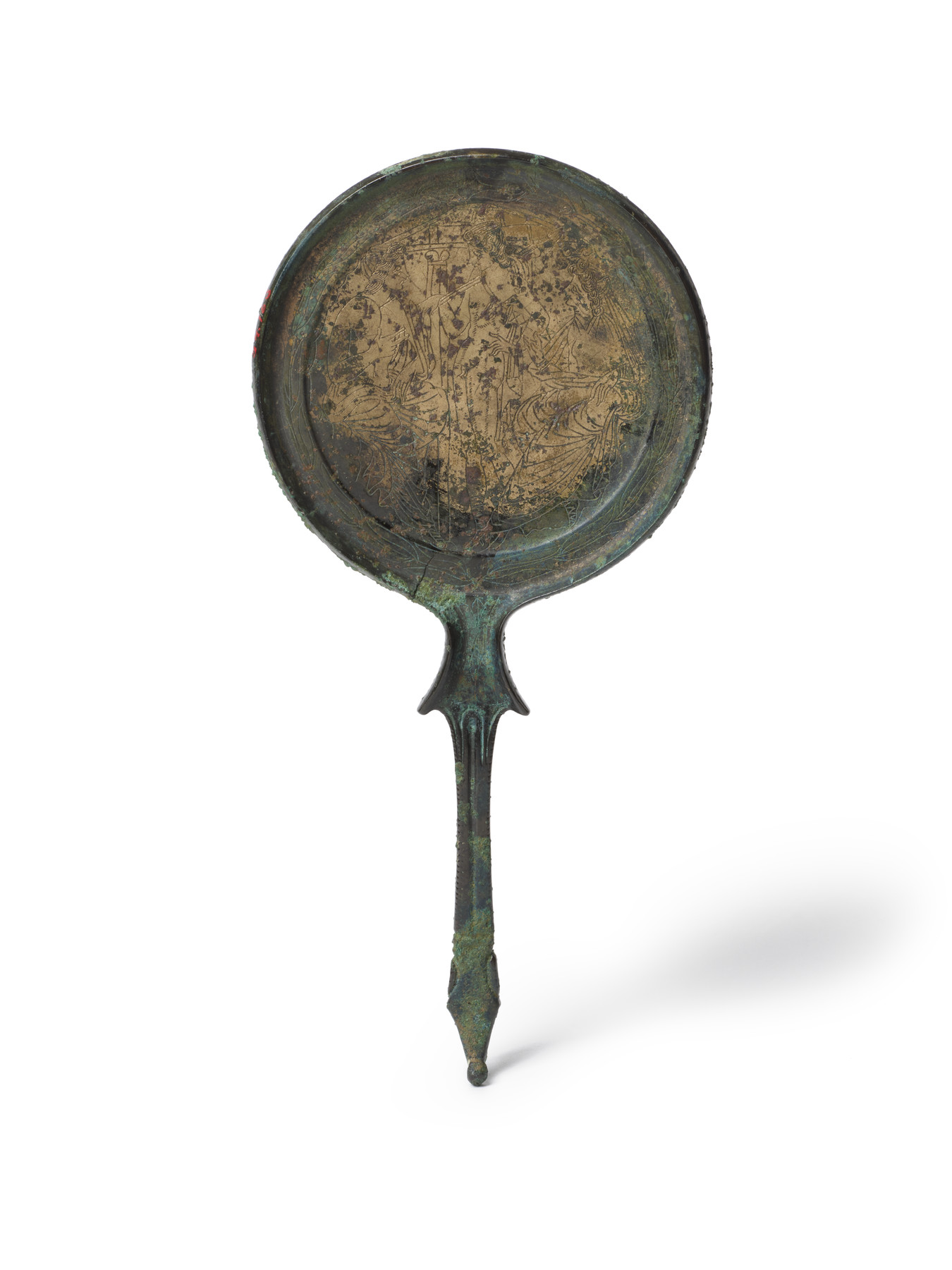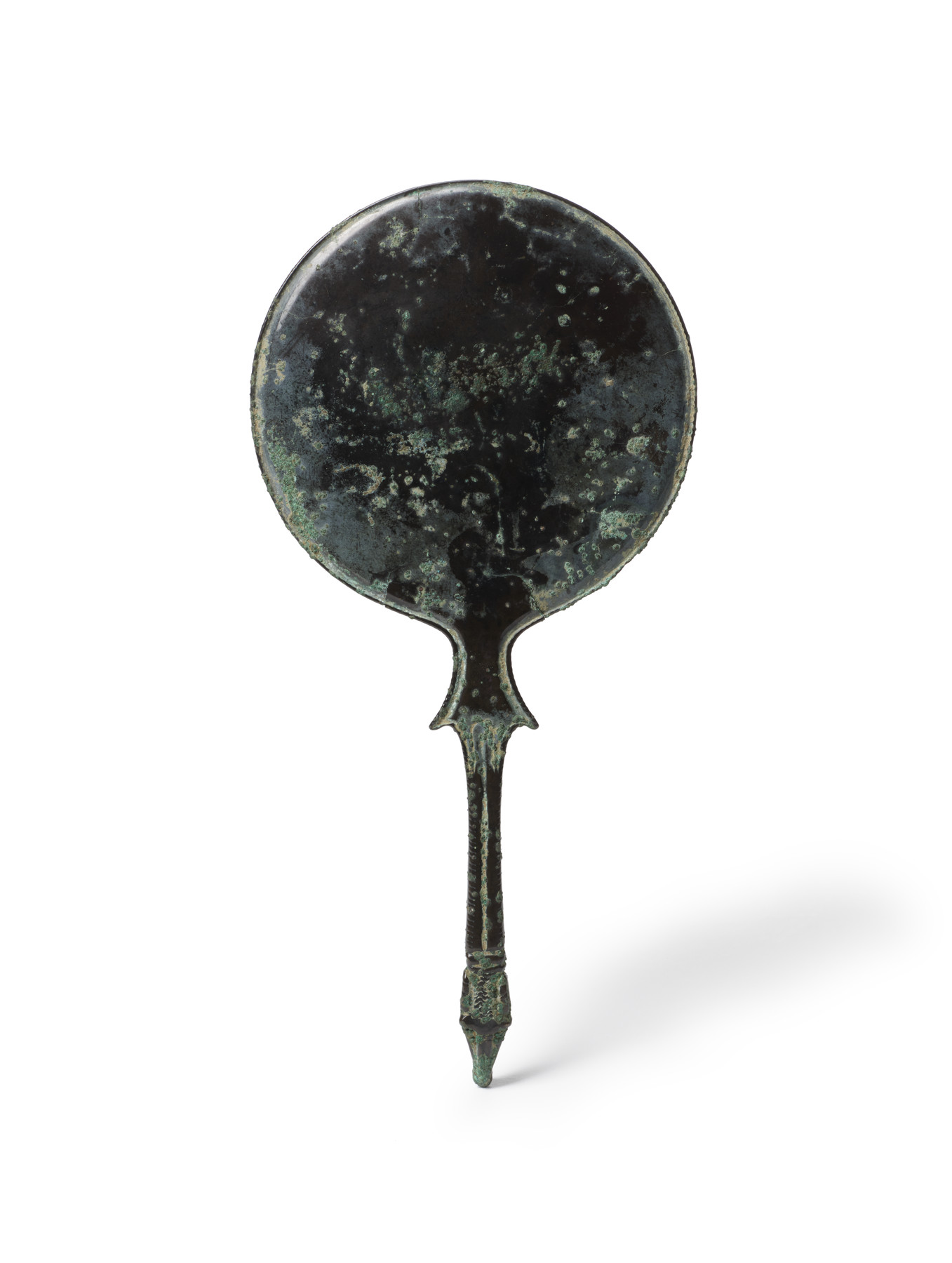Mirror with Three Figures
The mirror was cast as a circular disc whose edge projects to the back. Its handle, cast in one piece with the disc, ends in an animal’s head. A deep vertical line up the center and cross lines at the edge were cast into the handle on the front and back. The mirror surface is still partially reflective. Within the raised edge is a pattern of incised lines, which are continuous and hatched. The subject of the decoration is two male figures, perhaps the Dioskouroi, and a woman in front of a building façade. In the center stands a youth with drapery falling behind his back and wearing a sword on a band over his shoulder and holding a spear. At the left, the other male is a seated and half draped, and at the right is the female figure, who is seated, wearing a chiton and a mantel. On the raised band around the scene are laurel leaves, which are continued on the plaque at the top of the handle.
Provenance
Provenance (from the French provenir, 'to come from/forth') is the chronology of the ownership, custody, or location of a historical object. Learn more about provenance at the Walters.
Madame E. Warneck Collection Sale, Hôtel Drouot, Paris, 1905, lot 265. Henry Walters, Baltimore, [date and mode of acquisition unknown]; Walters Art Museum, 1931, by bequest.
Conservation
| Date | Description | Narrative |
|---|---|---|
| 3/17/1980 | Examination | examined for technical study; x-ray |
| 7/20/1992 | Treatment | other |
Measurements
Overall: 10 3/16 x 4 15/16 in. (25.9 x 12.5 cm)
Credit Line
Acquired by Henry Walters, by 1931
Location in Museum
Accession Number
In libraries, galleries, museums, and archives, an accession number is a unique identifier assigned to each object in the collection.
In libraries, galleries, museums, and archives, an accession number is a unique identifier assigned to each object in the collection.
54.163




